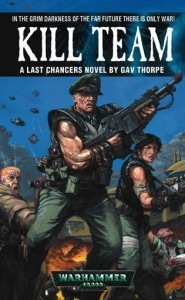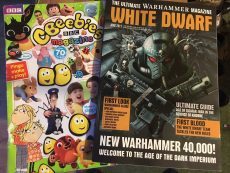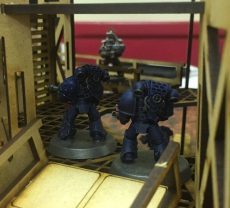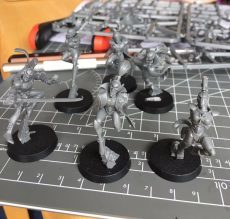Gav Thorpe's Blog, page 5
July 12, 2017
Lorgar – Author’s Notes
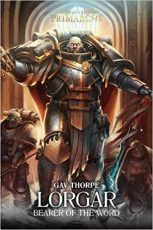 This week sees the release of Lorgar – Bearer of the Word. Although released under the banner of the Horus Heresy series, the Primarchs books are an opportunity to delve into a pivotal and characterful moment in that Primarch’s life at any point in time. The novel allowed me to look at some interesting themes, in particular another Father-Son relationship in Lorgar and Kor Phaeron, and ideas around organised religion and faith. Being an atheist and secularist it was a welcome challenge to portray characters of faith with an even hand, and not simply use it as a vehicle for a humanist tract.
This week sees the release of Lorgar – Bearer of the Word. Although released under the banner of the Horus Heresy series, the Primarchs books are an opportunity to delve into a pivotal and characterful moment in that Primarch’s life at any point in time. The novel allowed me to look at some interesting themes, in particular another Father-Son relationship in Lorgar and Kor Phaeron, and ideas around organised religion and faith. Being an atheist and secularist it was a welcome challenge to portray characters of faith with an even hand, and not simply use it as a vehicle for a humanist tract.
Choosing Lorgar
When Black Library approached me to write a book for the Primarchs series they asked if I had a particular interest in any titular character. The editors assumed, as have many fans, that I might like to continue working with Lion El’Jonson or Corax, as I have covered them in some detail in the Heresy-proper.
I took the opposite view, that it was an opportunity to play with a different Primarch, and just as importantly to let other writers have a go with the Lion and the leader of the Raven Guard. One of the great features of a multi-author series is seeing the way different authors tackle the same characters. There is a core of the character in all of them, but subtle differences of interpretation and writer peccadilloes reveal a deeper, more complex character I think. I compare it to the likes of Superman or Captain America. There is a centre around which the character is based that does not change, but how that is expressed and how they interact with different stories can be revealed by a variety of authors.
So, having turned down the Lion and Corax (though watch this space…) I was offered some other choices. It’s quite early in the series so most of the Primarchs were available, though a few had been baggsied for future projects. Unfortunately, Sanguinius was listed with those already spoken for, as I would love to write more around the Angel of Baal. Among those BL were keen for me to consider was Horus, which was very tempting. Not only is he The Man, and a great subject, there is an obvious commercial benefit to penning a novel with his name on it.
But I bottled it.
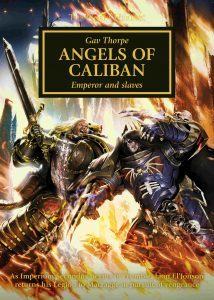 I thought about it, and of how much was already written about Horus and what was planned; that it would be a lot of research and cross-references and all that palaver to make sure it all gelled together. I enjoyed writing the Horus cameo in Angels of Caliban but the thought of a whole novel was daunting.
I thought about it, and of how much was already written about Horus and what was planned; that it would be a lot of research and cross-references and all that palaver to make sure it all gelled together. I enjoyed writing the Horus cameo in Angels of Caliban but the thought of a whole novel was daunting.
As when I picked on the Raven Guard for my first foray into the Horus Heresy, I looked for someone with a blanker page to fill. Not that Lorgar hasn’t had plenty of words written about him, especially the very fine stories from Aaron Dembski-Bowden. On top of that, there is copious amounts of Word Bearers lore throughout Anthony Reynolds’ 40K series. But the story I had in mind, the origins of Lorgar, were hardly touched on at all. And that gave me creative space.
He’s Not the Messiah…
As I mentioned in the introduction, the Primarchs series can be set anywhere along a broad spectrum of events, from the Great Crusade and potentially into the Scouring after the Siege of Terra. In cahoots with (former) series editor Laurie Goulding I pitched a story that took everything right back to its roots, to the world of Colchis where Lorgar was found and raised by the fanatical priest Kor Phaeron. This was the origin of the Word Bearer and, by extension, the very start of the seeds of the Horus Heresy itself. If the approach proves popular hopefully it will open up the possibilities of other novels yet to come.
To link the events of the book with those of the wider HH series Laurie suggested that I framed the main narrative with some chapters set later, and between us we highlighted a few choice occasions that would tie back to the known story of Lorgar – from the Purge, through his humbling by the Emperor at Monarchia up to his Legion’s rededication to the Imperial Truth (and in secret, his return the Old Faith).
The main inspirations were obvious – Exodus, the story of Jesus, a certain touch of Martin Luther and the Reformation. But I wanted to go beyond just a Judeo-Christian messiah figure, and delved into other Messianic stories, both religious and fictional. So there are obvious nods to Paul Atreides from the Dune series, as well as some episodes from the life of the Buddha, classical Western mythology like the labours of Herakles and the story of Prometheus, nods to Zarathustra (known as ‘the Word made flesh’…) and others beside.
…he’s a Very Naughty Boy
So despite trying to avoid a direct Exodus / New Testament story, I heavily drew on sword and sandals biblical epics like Ben Hur and Barrabas for a lot of the atmosphere, as well as a healthy dose of Mad Max post-Apocalypse and similar.
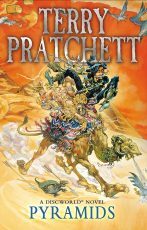 Getting Colchis feeling right was as much of a job as the portrayal of Kor Phaeron and Lorgar. I needed to create a world steeped in lore, corrupt and stagnated, and for that I actually looked to Pyramids by Terry Pratchett, and no small amount of Small Godstoo. There’s quite a bit of Brutha went into Lorgar, and the city states of Colchis have more than a passing resemblance to the kingdom of Djelibeybi.
Getting Colchis feeling right was as much of a job as the portrayal of Kor Phaeron and Lorgar. I needed to create a world steeped in lore, corrupt and stagnated, and for that I actually looked to Pyramids by Terry Pratchett, and no small amount of Small Godstoo. There’s quite a bit of Brutha went into Lorgar, and the city states of Colchis have more than a passing resemblance to the kingdom of Djelibeybi.
Creating the culture in line with what had been written before, in particular couching the Covenant and religion of Colchis in more detailed terms, led to the exploration of temporal and spiritual power. It was one of the themes that first came to my attention years ago from research I conducted when writing the first Codex: Sisters of Battle for Warhammer 40,000. It’s been a go-to theme ever since. Along with the stasis versus change undercurrent that runs throughout 40K, it’s a rich seam to mine.
And in building the terrible edifice of the Covenant, and considering the tyrannical nature of Kor Phaeron, I might have ended up creating such a sympathetic character in the revolutionary Lorgar that it seemed too much of a stretch to his role as an arch heretic. This is where the framing device came in, slowly revealing a side to the Primarch that isn’t so obvious to those around him. What is revealed is certainly not the mind of an average man…
It’s a novel I greatly enjoyed writing, with a very different feel to the Horus Heresy, though it is directly related to those events. Like a lot of these stories, looking back I could quite easily have written a trilogy about these characters and explored the setting even more. For now, the one novel will suffice and hopefully readers will be both satisfied and inspired by what is within.
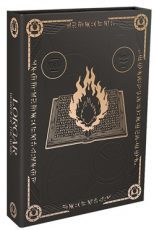 Lorgar: Bearer of the Word is now available to purchase as a shiny limited edition, over at Black Library.
Lorgar: Bearer of the Word is now available to purchase as a shiny limited edition, over at Black Library.
Buy Lorgar
If you’ve enjoyed this blog post, you can find all my previously published Authors notes, here. And if you want to take a better look at the Limited Edition, you can see a video of me taking my first look at it here.
Let me know in the comments if you’ve enjoyed my Author’s Notes for Lorgar!
**To make sure you don’t miss out on any blog posts, you can keep up-to-date with everything Gav by signing up to my monthly newsletter. As a bonus, every other month I randomly pick a newsletter subscriber to receive a free signed copy of one of my books.**
Please Feel Free to Share:







July 8, 2017
Lorgar: Bearer of the Word – Out Now
 My first installment in the Horus Heresy Primarchs series, Lorgar: Bearer of the Word, is now available to buy at Black Library as a swanky limited edition.
My first installment in the Horus Heresy Primarchs series, Lorgar: Bearer of the Word, is now available to buy at Black Library as a swanky limited edition.
“On the world of Colchis, mighty religions rule a decaying society in the name of absent gods – until the arrival of Lorgar. Primarch, prophet, leader of destiny, the Golden One is raised by Kor Phaeron, priest of the Covenant, to be his weapon in a quest for power.
As religious war spreads across the planet, spearheaded by the Brotherhood of Lorgar, the primarch is plagued by visions of the future and the coming of the Emperor. To find his place in this new order, he must reach balance between the teachings of his adopted father Kor Phaeron, and the fate that he knows awaits him among the stars.”
About The Limited Edition
Exclusive to blacklibrary.com, the Limited Edition includes the following features:
– 240 page hardback novel encased in a magnetic presentation box
– Grey cover with gold foil
– Spine is wrapped with cloth with gold foil
– A black marker ribbon and gilt-edged pages
– Matt laminated covers include a crop of unique artwork which is reproduced in full in the interior.
– Each copy is uniquely numbered from an edition of 2,500.
You can see the limited edition in a bit more detail in this video:
Keep an eye on my website as I’ll be publishing my Author’s Notes, a related writing advice post, and the playlist I used to write the novel.
Buy Lorgar
**To make sure you don’t miss out on any blog posts, you can keep up-to-date with everything Gav by signing up to my monthly newsletter. As a bonus, every other month I randomly pick a newsletter subscriber to receive a free signed copy of one of my books.**
Please Feel Free to Share:







July 5, 2017
Eldar Q&A – Part Three
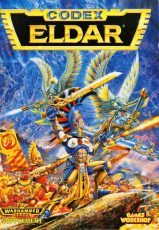 Following my recent Eldar Q&A Parts One and Two, Iracundus shared some interesting thoughts and questions, so I’ve turned my response into Part Three!
Following my recent Eldar Q&A Parts One and Two, Iracundus shared some interesting thoughts and questions, so I’ve turned my response into Part Three!
Iracundus asked: Thank you so much for answering questions and providing thoughts on Eldar society. My thoughts below in a wall of text:
All the below thoughts were as a result of trying to reconcile both the Eldar looking down on currency (as per the FFG RPG Rogue Trader) while still conducting trade and having a functioning internal society when resources (time is a resource) are still limited.
Although Eldar society may provide for all basic needs and these may be considered free or too cheap to be worth tracking, it can still mean trade for luxury/exotic goods from far away worlds or goods that have value due to being crafted in traditional techniques by a master craftsman.
Even with Bonesingers, there is the ultimate limitation of time. The time limitation is a significant one because it constrains what can be made in a given amount of time. How the Bonesingers go about determining what to make is something that would be nice to have explored. Who decides whether they build 1000 shuriken catapult ammunition clips, a single Wave Serpent, or whether they work on a decorative pot? If they only build what they feel like on a particular day, it raises the possibility of erratic supply of items. If they’re simply told by the Farseers, then that is a command economy. The limitation of how much waking time a Bonesinger or other artisan has imposes scarcity of some form.
We know from Path of the Warrior that there does seem to be some form of trading with the Exodites (for their dragon meat) and also within a Craftworld, as there is mention of a location where the latest fashions are peddled. (“…the Boulevard of Split moons, along the arcades of the fashion-sellers and jewelsmiths…” p.59, Path of the Warrior)
Even though there may not be a distinct currency, things of value are still being exchanged. The Eldar society may have an abundance of things but it is not entirely post scarcity so long as there are a limited number of items or resources. Even the pre-Fall Eldar Empire was not entirely post-scarcity as the Dark Eldar Codex describes how it was the nobles that were the first to descend into depravity as they had the greatest resources to do so.
 The purpose of Commorragh originally as a major trade port also shows that trade and therefore limited resources or commodities were a fact of life even in the pre-Fall times. Finally, there exists a concept sketch for an armed trader ship by Jes Goodwin. Clearly having the Eldar trade was an old and core concept for the Eldar. Whatever the Eldar trade, for whatever purpose whether it be personal fulfillment, exploration, duty to their Craftworld, or exchange of resources, they do engage in commerce: “They ate fruits from the orchards and breakfasted on spiced meats brought back by traders with the Exodite worlds.” p. 80, Path of the Warrior.
The purpose of Commorragh originally as a major trade port also shows that trade and therefore limited resources or commodities were a fact of life even in the pre-Fall times. Finally, there exists a concept sketch for an armed trader ship by Jes Goodwin. Clearly having the Eldar trade was an old and core concept for the Eldar. Whatever the Eldar trade, for whatever purpose whether it be personal fulfillment, exploration, duty to their Craftworld, or exchange of resources, they do engage in commerce: “They ate fruits from the orchards and breakfasted on spiced meats brought back by traders with the Exodite worlds.” p. 80, Path of the Warrior.
The Gathering Storm books mention how there were insufficient resources for Biel-tan to reshape worlds into paradises like the Eldar empire’s old worlds. While Craftworlds may be self-sufficient to maintain the lifestyles of their inhabitants, clearly there seems to be a limit to what they can do. I could also see some avaricious or passionate Eldar desiring and trying to amass the resources in order to be able to do such world shaping.
The Craftworld and the Eldar within it seem to have a communion of sorts. When the Korlandril becomes an Exarch in an old deserted shrine, shortly afterwards his first disciples, those stirred to walk the Path of the Warrior find their way there, guided by the shrine (or perhaps the Craftworld/Infinity Circuits as a whole). I made note of how there are communal forms of transport guided by the group desires of the passengers.
With the Infinity Circuits already serving as a form of communication, power, and eternal rest, why not also a store of value? The following is speculation, but based on these above known points:
How about a credit system based on contributions judged of worth to the Craftworld? Thus an artist producing a work of art that is judged by the community (perhaps through unconscious consensus) to have artistic or cultural value gains a certain amount of credit (though not necessarily denominated in strict units), that is stored and remembered in the Infinity Circuits. It might be more like a reputation value rather than a strict bank balance. In turn, the artist can go pick up materials or goods he desires, which in turn is debited against this reputation/credit value. If the Eldar do have some subconscious link, then the value or prices of different things can also be reached through an unconscious consensus. Those that produce things that are in short supply or provide great service gain more credit. Thus the Craftworld would behave like a living entity acting to meet its own needs. By also being like a reputation value associated directly with the individual, no Eldar could be robbed of this currency as there is nothing physical to take.
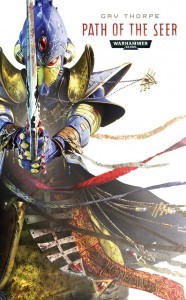 This system could also be used to explain how Corsair Eldar get their ships refitted and serviced. If they stop at a Craftworld with goods of inherent value (such as the earlier mentioned spiced meat) or tell of their deeds smiting the lesser races, then those deeds might be considered services that gain them credit. Direct fulfillment of special requests by Farseers would attract more credit than just random killing of other races or pillaging a few tons of grain or meat.
This system could also be used to explain how Corsair Eldar get their ships refitted and serviced. If they stop at a Craftworld with goods of inherent value (such as the earlier mentioned spiced meat) or tell of their deeds smiting the lesser races, then those deeds might be considered services that gain them credit. Direct fulfillment of special requests by Farseers would attract more credit than just random killing of other races or pillaging a few tons of grain or meat.
The Infinity Circuits would result in information being freely available and also instantly (or near enough) assimilating each individual’s perception to reach a final community value of a person’s contribution. I do not envision it as anyone being “paid” from anyone else but rather credit held with the Craftworld. Thus Korlandril (from Path of the Warrior) might get “Korlandril credits” for crafting his big statue (even though it was placed for public communal display) that are then used whenever he next needs supplies or a new fashionable set of clothes from the fashion seller. A certain number of “Korlandril credits” might then be destroyed. The fashion seller would then get ” credits” created by the Craftworld’s Infinity Circuits, but this amount may not be the same as the number of “Korlandril credits” destroyed. I could imagine varying amounts being created or destroyed based on who is doing the buying. A famous artist buying paint might cost less for example than some novice buying it, while other items might be off limits unless you were on the Path. If a piece of art continues to inspire or attract even greater acclaim, then why not a continuing stream of income like royalties?
Such a system removes the need for living Eldar doing “work” like being an accountant or having to count and manage their own finances.
My view – in brief – is that within the craftworlds the eldar have gone through currency and out of the other side, so to speak. That is, they have turned full circle to a barter system without any need for an intermediary and arbitrary exchange method. That’s not to say that a good poet, for instance, literally gives a bonesinger poems in exchange for a nice bit of wraithbone, but rather their kudos, fame and talent is repaid in kind by others within the society consummate to the standing of that individual. Gift-giving and exchanges, rather than hard or soft currency*.
As an example, in Path of the Outcast Aradryan browses a jeweler’s stand in the market. The jeweler, on a strand of the Path of the Artist, doesn’t sell his or her wares in order to get food. The act of creation is the purpose of the jewellery and nothing more. Aradryan is free to take whatever he chooses from the stand. Even if he took it all, it would not be considered theft, because the jewellery exists only as jewellery, it has no other intrinsic monetary value. Similarly, Korlandril’s sculpture is on display for all to see, there is no charge for attendance. On the flipside, the jeweler and Korlandril can freely sustain themselves with food and drink, and air, and other’s company and skills, and because art is freely available should they desire a piece from a particular artist they can simply request one (assuming they are still alive) or otherwise strike a bargain with the current owner for some other exchange of goods or services. Eldar are so long-lived that I see them rather unattached to physical things or even ideas over any length of time. They are, as part of the Path, meant to shed their past lives, possessions and even principles as they evolve their psyche.
I also hinted in the Path series that the Infinity Circuit might unconsciously regulate these behaviours – that if there is a lack of eldar on the Path of Service, for instance, it will subtly manipulate its populace or even individuals until the balance is restored. So maybe the credit system isn’t that far off, but certainly not acknowledged consciously.
I can, however, see that eldar on the Path of the Trader – perhaps trying expunge vestigial notions of consumerism, greed, avarice – may need to create a scoring system in order to satisfy and later expunge those negative acquisitive traits. As Trader, acquisition becomes the goal. ‘Winning’ by accruing more wealth, by defeating another trader in a deal, by getting a bargain becomes part of their life. In this regard a token currency to keep score might exist – ‘trader florins’ that are of no interest to anyone except other traders. This cannot occur within the regulated, post-scarcity system of the Craftworld and so must take place with outsiders – exodites, outcasts, Commorraghans and even other species.
Similarly, Outcasts and Kabalites are not within the closed system of the craftworld and, having not partitioned and dealt with their acquisitive natures, are prone to the extremes of all aeldari – and in this case their desire for shiny baubles and general magpie behaviour may come to the fore. Without the restrictions of the Path the ancient inherent desires for power, hierarchy, accumulation of status begin to hold sway again.
And that’s where we head back to the idea of the Aeldari nobility during the time of the dominion (which is what I’ve started calling the ’empire’ as I think it is more evocative and doesn’t presume the existence of an Emperor – which incidentally is why we initially tried to avoid it for the T’au but that didn’t last.) So the dominion was, due to aeldari nature and technology, a post-scarcity society. With matter printing and automated armies to create or claim whatever they desired, the aeldari needed for nothing. But need and desire are not the same thing, and so even as the slow decline towards other hedonism overtook their society, so also over the course of tens of millennia the desire for power, hierarchy, dominance (because wealth is really only a tally of power) surfaced to create an aristocracy. But it’s entirely a paper nobility, created by its own desire to exist, to be in charge rather than a singular necessity of the aeldari society. Playing at nobles, as it were, and no greater or lesser temporal power than any other aeldari. So, politics and intermarriages and eventually all kinds of Game of Thrones shenanigans ensue, for the simple sake that these became the obsessions of those whose natural inclinations led them in that direction, quite ineffectual to the rest of the workings of the dominion until it was all rather too late.
*There is talk these days of Social Currency in the world of economics, which is about a company’s standing and ethics (and brand power as well as brand loyalty) rather than dollar value. In a consumerist society, where we choose to spend our money is determined as much by the company were are giving it to and our lifestyle and principles as it is a simple monetary transaction. In craftworld society the eldar are intimately, psychically connected to each other. The sense of belonging, or lack, is very keen for them. Outcasts are literally that, disjointed from the gestalt psychicness of others, and so ‘Social Currency’ in eldar terms is all about good standing and reputation.
Um, that was not brief, was it…?
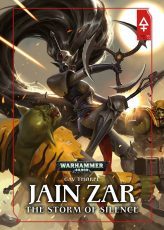 Iracundus also commented: Drastanta, Tempest of Starlight, Phoenix Lord of the Shining Spears is given in the Iyanden supplement (p.51) as going to find his mentor Asurmen already fallen before N’kari, Keeper of Secrets, during the destruction of Asur. Since the destruction of Asur is what first scattered the Asurya to the galaxy and the seeding of the Warrior Path among the Craftworlds, Drastanta by being mentored by Asurmen on Asur therefore must also have been one of the Asurya.
Iracundus also commented: Drastanta, Tempest of Starlight, Phoenix Lord of the Shining Spears is given in the Iyanden supplement (p.51) as going to find his mentor Asurmen already fallen before N’kari, Keeper of Secrets, during the destruction of Asur. Since the destruction of Asur is what first scattered the Asurya to the galaxy and the seeding of the Warrior Path among the Craftworlds, Drastanta by being mentored by Asurmen on Asur therefore must also have been one of the Asurya.
While not all Phoenix Lords need be Asurya, all Asurya seem to have been Phoenix Lords.
Similarly, Irillyth, Shadow of Twilight, Phoenix Lord of the Shadow Spectres is explicitly stated in the Doom of Mymeara book to have been a disciple of Asurmen before going on to start the Shadow Spectre Aspect. If being directly taught by Asurmen on Asur and then founding an Aspect is the criteria for being one of the Asurya, then Irillyth would also be one of them.
I’ve not read it, so does it say he was taught by Asurmen, or taught by Asurmen as one of the Ausrya? Because even after the break up of the Asurya Asurmen would have continued to have pupils, some of them perhaps even becoming the first exarchs of their Aspect.
Gah! This is the problem with retroactive setting changes… I used to hold that that while all Aspects have a founder, only the six originals were Phoenix Lords / Asurya. Even if new Aspects were introduced into the rules it did not follow that they had a Phoenix Lord (in the same way that we wouldn’t just throw in a 21st Legion and new Primarch for the First Founding…) The first offense against this came from a novel, so was easily ignored, and then I think Forge World created a new Phoenix Lord, which could similarly be pout down to an errant use of terminology… Now though…That has fallen by the wayside in recent years unfortunately. Currently the plan for novels is to cover the original six (seven if we include Arhrha / Karandras separately), though perhaps others can appear without being title characters. I also dislike this throwaway comment in a piece of wargear description for basically nailing down the destruction of N’kari by this hitherto unheard-of Phoenix Lord, so if i can get away with it I might just try to pretend it never existed. We’ll see what the Bl editors think. It’s not all about what i think though, there are considerations of what GW sees as the official story, as well as other writers that may contribute to the series.
 And Austin added: I wonder if perhaps Asurmen still, very rarely, teaches pupils who go on to found new aspects. That would make it possible for there to be new aspects without their founders having been present at the Shrine of Asur.
And Austin added: I wonder if perhaps Asurmen still, very rarely, teaches pupils who go on to found new aspects. That would make it possible for there to be new aspects without their founders having been present at the Shrine of Asur.
Absolutely he does, and many Aspects have risen and died away and perhaps been reborn – Asurmen has been around for a long time, even by Aeldari standards.
If you’ve enjoyed this Q&A, don’t forget to also read Part One and Part Two. You might also be interested in my Dark Angels Q&As – Dark Angels Secrets Revealed! and More Dark Angels Secrets Revealed!.
**To make sure you don’t miss out on any blog posts, you can keep up-to-date with everything Gav by signing up to my monthly newsletter. As a bonus, every other month I randomly pick a newsletter subscriber to receive a free signed copy of one of my books.**
Please Feel Free to Share:







June 29, 2017
June 2017 – Q&A (Part 2)
 This is a compilation of questions that have been emailed and messaged to me recently. You may remember that I didn’t do a May Q&A because I’d published an Eldar specific Q&A instead (you can read Part One and Part Two here). As there are now lots of questions to catch up on, the June Q&A is in two parts – you can read part one here.
This is a compilation of questions that have been emailed and messaged to me recently. You may remember that I didn’t do a May Q&A because I’d published an Eldar specific Q&A instead (you can read Part One and Part Two here). As there are now lots of questions to catch up on, the June Q&A is in two parts – you can read part one here.
If you want to ask anything, you can post a comment here or get in touch through the contact page (and newsletter subscribers can just reply to any of my emails).
I’ve been posting Q&As for a while now, so if you’ve found this one interesting, you can look back at previous Q&As here.
Iracundus commented on the blog (in response to the interview with Jes Goodwin): I second the call for Exodites. If we can have Kroot wandering the galaxy, we can have Exodites. Maybe even explain their presence away from their worlds as part of some new quest to rescue Isha or resurrect Kurnous?
Exodite worlds get attacked all the time, no need to worry overly much about how they get into fights!
Austin followed up with: I love the lore about exodite knights (bright stallions etc.) travelling through the webway to nearby knight worlds to battle them. Effectively an excuse for giant robot jousting battles!
I’m really interested in seeing the extent of exodite technology and what they get up to. In older lore they had bright stallions and such, in your vision of them do they still have these knights as well as mounting lasers on dinosaurs? I’m thinking getting two wraithknight kits would be a pretty easy way to make a bright stallion!
I would like them to have both knights and dinosaurs / dragons, because why wouldn’t you? However, from what I remember back when some miniatures were made for Epic about twenty years ago, the theme had definitely moved from giant robot to dino-riders so the guidance from GW might be different.
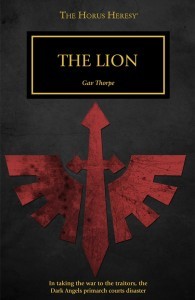 Jon replied to my newsletter: [Jon’s question, which concerns the storyline of Nemiel in my novella The Lion, has been added to my ‘Spoilers‘ page. If you’ve read the book, or don’t mind spoilers, click here. Everyone else – you have been warned!
Jon replied to my newsletter: [Jon’s question, which concerns the storyline of Nemiel in my novella The Lion, has been added to my ‘Spoilers‘ page. If you’ve read the book, or don’t mind spoilers, click here. Everyone else – you have been warned!
Veli-Matti contacted me via email: Two questions that seem as cozy to people in any way involved with GW and their products as Culexus Assassin is to Eldar Seer Council…
1) From professional and successful writer’s standpoint (no pressure :D), was it really necessary to simply destroy pretty much everything from the Old World just for the sake of change? And all though I am a fond Tzeentch player myself, I have to simply add that was it the situation really that unrecoverable in the OW that the writers saw no other way, but to simply scrap it and start anew? Forfeiting decades of written and experienced lore for just a fresh start?
2) Jumping to 40k, is there really any lore-wise reason for there to be Primaris Marines? Other than of course pumping up the sales of new miniatures? They seemingly serve a purpose that could have perfectly been performed by some Veteran Units from each existing units, Tactical, Assault, Devastator, Bikes, Terminators, Dreadnoughts… (Last one especially being cryptic, what did they throw the guys who got maimed in training to Dreadnoughts, because them getting maimed was so glorious?) As they are now there to simply overshadow the heroes of legends that fought against every odd for decades and thousands of decades in lore, just to be pushed off now by some silly-named newcomers. And yes, they will be pushed off. Can you really see someone planning on buying Marines going for the lesser variant? Also the names. What’s the idea behind naming them all silly-like when the old ones are rather simply named. Not to mention Admech is apparently starting to number things out of order with their armours. Because that’s something they’d lore-wise do…
Oh, what the heck, those were multiple-part questions already. Let’s throw in an extra one.
3) When did the staff of GW get allergic to anything old? Is it contagious? Can’t it be caught via an e-mail? O_O
Since there has been now a helluwa lot of change just for the change’s sake. And even Tzeentch would agree that it was not as planned. In frank, honest opinion, I’d say many recent things, the destruction of Old World, next to every new “race” they’ve made to AoS, the new Primaris Marines… The lot of them have sounded like just lazy writing. I’m sorry, I’d really like to like these things better, but many of them seem just plain off to me.
1. You can read a bit more of my thoughts on AoS here and in the comments.
In a more direct answer to your question, I think it was necessary to take the drastic step of creating the Age of Sigmar once they were committed to a complete relaunch of Warhammer. I loved the Warhammer World, I worked and wrote with that place for 14 years and have gamed with it for over two decades, so my attachment is probably even greater than most folks that didn’t have Warhammer Loremaster as a job title for several years.
However… Warhammer was sliding. Sixth edition invigorated the sales for a while, but as a rules system it simply became less and less accessible. I think 8th edition was a massive step in the wrong direction, enforcing even bigger units and larger armies as a norm, and from there only a complete reinvention was going to work as a game system that was scaleable.
In terms of the background and imagery I tried, along with the artists, other developers and miniatures designers of the time, to create as unique a Warhammer feel for the visuals as possible. But fundamentally Warhammer was just too close to its roots, in terms of Elves, dwarfs, historical armies and so on. It simply lacked the stand out characteristics of an original IP, so while its strength derived from the familiar and unique blend of influences it left the background open to outright imitation by other creators and manufacturers.
Leaving Warhammer as a viable alternative while AOS was being launched would have split the community even harder and in all likelihood would have killed AOS before it even began. Frankly, GW couldn’t afford to give people the luxury of sticking with the old system and background. The launch, the attitude of GW at the time and their inability to work with the community contributed to a terrible release in terms of taking gamers with them, but I think most people can admit now that two years on AOS has been turned into a success. It’s certainly the most animated I’ve seen the Warhammer community in about a decade or more.
And from a writer and reader’s standpoint there is, albeit slim, still the possibility that we might yet get to create new fiction from The World That Was. The door hasn’t been totally closed.
2. I know nothing more than you do regarding the Primaris Marines. I haven’t been involved in their development. From what I’ve seen, (including some inventive theories on forums!) there seems ample justification from a background point of view and, as an author, there are numerous possibilities for fresh conflict within the space marines chapters that arise from their introduction.
Am I 100% behind the idea? No. I worry when the ‘elite of the elite’ are then no longer that because the ‘elite of the elite of the elite’ come along. For example, I feel the same about Deathwing Knights – the ‘even better than the best’ squad. On the other hand that is a new theme, the worry that they are being usurped, that can be drawn upon in the fiction.
It’s also an area I started to explore in Deliverance Lost, and has been visited with the likes of the Cursed Foundings, so it’s not exactly without precedent.
 Francis asked on the blog, in response to Part 2 of my Eldar Q&A: I am reading the Storm Of Silence novel now, and I really like it, just like I enjoyed the Asurman novel, however, I am a bit confused. At what time does it take place?
Francis asked on the blog, in response to Part 2 of my Eldar Q&A: I am reading the Storm Of Silence novel now, and I really like it, just like I enjoyed the Asurman novel, however, I am a bit confused. At what time does it take place?
The inclusion of Maensith suggest 41st millenium, as I got the impression from the Path of the Eldar books that these were set in this period of time, however, the inclusion of a young Ulthwe seer called Eldrad suggests that it is much much earlier, m32 at the latest. Unless ofc this is another farseer called Eldrad with a massive psychic potential.
Also, if this is the “one” Eldrad, “knower of fates” “sun of the Eldar” “scourge of Armageddon” etc etc, I thought he remembered a time before the fall, at least that is what it says in the cosexes, but Jain Zar at one point clearly states that he does not.
Care to clear it all up for me?
The Post-Fall Jain Zar storyline takes place before the Horus Heresy. The Path series is indeed many thousands of years later, but that doesn’t preclude Maensith surviving for that long, particularly if she spends most of her time in the webway and other pocket dimensions away from the normal course of time.
And yes, it is that Eldrad. I’ve always thought of him as a Post-Fall personality, and when I originally had a ranger boasting of him warning the Emperor about Horus it was one of two possibilities – a) The ranger was lying, or misled. b) Eldrad sent his spirit back in time, wise after the event, to warn of Horus’s turn. Unfortunately I wasn’t present at discussions around that matter when Horus Heresy events were discussed with Eldrad in mind. I think that a pretender to the throne of greatness is more interesting as a character.
To which Iracundus countered: There is one problem with the Post-Fall Jain Zar continuity if it is meant to be pre-Heresy. Vect is shown as in charge of Commorragh and makes reference to defeating Shaa-Dom. This dates it to at least late M37 since that is the date given in the Dark Eldar Codex
He claims to have razed Shaa-dom. Doesn’t mean he finished the job properly back then.
Julien asked via the website: I wonder why there isn’t more Warhammer and W40K comic books. I think that the characters have a lot of potential for that. If you have to compare the Phoenix Lords to manga or comic book characters in terms of capability and portrayal who would it be ?
Comics are a subject for licensing, as it isn’t one of GW or Black Library’s core businesses (as in, they don’t have an experienced, professional comics division). That means it’s up to those in the comics biz to carry the torch. Recently that has been Titan Comics so we’ll see how that comes along. I am, as always, open for offers from anyone wanting an experienced writer for a project…
I don’t like to do cross-comparisons between settings because it’s basically totally subjective whether ‘warp powers are stronger than the Force’, for example, or if Thor is really a daemon prince.
 Dave contacted me via the website: Hate to write you with a gripe, particularly one I’m sure you probably have little if any sway on, but I have to say I was kinda disappointed with the presentation of your latest book by Black Library. [The content though I’ve every confidence is an absolute delight]
Dave contacted me via the website: Hate to write you with a gripe, particularly one I’m sure you probably have little if any sway on, but I have to say I was kinda disappointed with the presentation of your latest book by Black Library. [The content though I’ve every confidence is an absolute delight]
Now BL has changed their book styles tons over the years [my Gaunts Ghosts novels vary in colour, size and design radically through the set] and with some of the latest series, Beast Arises being a good example they’ve gotten better with consistency in a set with a nice uniform presentation.
I’m a little pedantic with my books, and I suppose I put more store than most in a series having a consistent style, so on the shelf they have that nice coherent grouping feel. Shows them off nicely etc, particularly with a theme that translates across them all.
Sadly I really think they missed the mark on your series 
June 26, 2017
The Origins of the Tau*
This week sees the re-release of my Last Chancers novel Kill Team as part of the Tales of the Greater Good e-bundle available from Black Library. It seemed a perfect opportunity to reveal a little bit about how the T’au (I’ll stick with the updated spelling) came into being, and my part of it.
Before They Were Famous
As I’ve mentioned in some interviews, the genesis of the T’au philosophy and society pre-dates my employment at Games Workshop (and their official inception) by about a decade. Inspired by the Eldar article in White Dwarf 127 as an impressionable teen I embarked upon a personal project to emulate that wonderfulness, complete with Jes Goodwin-alike concept sketches, background and army list.
The species I invented were called the Shishell (or more specifically the Shissellian League) and were Lizardmen In Space, like Eldar were Elves In Space. The visuals were nothing like the T’au ended up, but a fundamental part of the background I created was the idea that their society was based around five castes – Earth, Air, Fire and Water, and a fifth called Spirit. The Shishell had psykers ruling over them, whereas the T’au most definitely do not.
Here’s One I Made Earlier
Wind forward to 1999/2000 and I’ve been in the Games Workshop Design Studio for six or seven years. The word from on high (known to most of us as Rick Priestley) was that instead of a reiteration of Warhammer or Warhammer 40,000 for a September big box release, GW was going to put the same effort and resource of a new edition into creating a brand new army.
Games Development was tasked with pitching ideas for what they might be. Turning Necrons into a full army was one. That happened later. There was a race of Ultron-inspired sleek robots based on the throwaway reference to the C’tan. They appeared in a different fashion with the Necrons. We also had the Kroot, a single sketch among an alien ‘Usual Suspects’ style line up from Dave Gallagher in Warhammer 40,000 Third Edition. They were pitched as an entire race of mercenaries. They ended up being part of the T’au release. Then there was the Squats re-launch as Demiurgs. After a while they made a cameo appearance in the Battlefleet Gothic system.
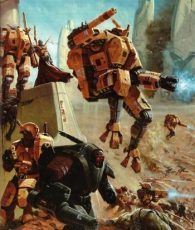 And with them were the Tao (later Tau, now T’au) based on the underlying concept of the five elements I had originally come up with for the Shishell. I had kept my hand-typed reams of background and pencil sketches and persuaded the rest of the team that it was worth a punt, marrying some of the background to the idea of a more modern army, mecha-themed force (as opposed to the far more organic anime influence in the Eldar designs).
And with them were the Tao (later Tau, now T’au) based on the underlying concept of the five elements I had originally come up with for the Shishell. I had kept my hand-typed reams of background and pencil sketches and persuaded the rest of the team that it was worth a punt, marrying some of the background to the idea of a more modern army, mecha-themed force (as opposed to the far more organic anime influence in the Eldar designs).
The Best Laid Plans…
Between that very exciting concept process and the start of work, two things happened to change the course of history. Well, three, I suppose.
Firstly, Games Workshop acquired the license for The Lord of the Rings based on the new films by Peter Jackson. The Fellowship of the Ring became the big Christmas release.
Secondly, Tuomas Pirinen, who had headed up the Warhammer games development effort through the creation of Warhammer Sixth edition, left to work on video games.
Which led to the third thing, the split of Games Development into three teams (until then we had, in theory, floated between different games systems as needed). Andy Chambers became 40K Overfiend. Alessio Cavatore was LOTR Ringbearer. I took the title of Warhammer Loremaster.
Which meant it fell to Andy C, Pete Haines, Andy Hoare and others to actually realise the T’au into its first launch Codex. And a rather splendid job they did of it, I think.
Enter the Last Chancers
But I wasn’t done there, thanks to my freelance work with the Black Library. A follow-up to 13th Legion was on the cards and BL were keen to get some action with this new alien race involved. Having been intimately related to the development of the T’au I was ideally placed to exploit this and so pitched a novel that set the Last Chancers against the warriors of the Greater Good.
It was particularly entertaining to get under the skin of the T’au and, through the eyes of Imperial Guardsman Kage, look at how the superstitious, unreasoning minds of the Imperium would see the technology-embracing, progressive ideals of the T’au. Heresy, obviously.
It was also at this time that I had recently finished work on the Inquisitor game, and the introduction of Deathwatch Space Marines, and so the opportunity to play around with new aliens and a specially-created breed for alien-hunting Space Marine made the plot obvious – an assassination mission!
All-in-all I am really pleased with the way Kill Team dealt with the T’au, showing up some of the failings of Imperial orthodoxy, but ensuring that these Greater Do-Gooders were not quite as shiny and nice as some might think. As a novel it probably works the best of the trilogy and I would say has been the most-mentioned in terms of influencing people and as an enjoyable read.
It also contains two of my all-time favourites scenes. The first is a Mos Eisley cantina-style alien bar that inevitably becomes a classic pub brawl. The second is what I refer to as the ‘Infamous Kroot Barbecue’ scene, that had editor Lindsey Priestley aghast.
So, why not check it out on your e-reader and read a bit of authentic Games Workshop history.
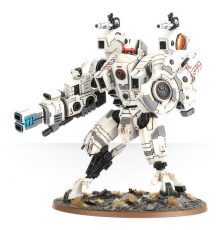 The Tales of the Greater Good eBundle contains the following titles:
The Tales of the Greater Good eBundle contains the following titles:
Gav Thorpe (Kill Team)
Phil Kelly (Space Marine Battles: Blades of Damocles, Farsight, Blood Oath)
Peter Fehervari (Fire Caste, A Sanctuary of Worms, Out Caste, Fire and Ice)
Braden Campbell (Aun’shi, Commander Shadow, Shadowsun: The Last of Kiru’s Line)
Andy Smillie (Kau’yon, The Tau’va)
Simon Spurrier (Fire Warrior)
Guy Haley (Broken Sword)
Ben Counter (Black Leviathan)
Josh Reynolds (Hunter’s Snare)
Andy Chambers (The Arkunasha War)
Buy The eBundle
**To make sure you don’t miss out on any blog posts, you can keep up-to-date with everything Gav by signing up to my monthly newsletter. As a bonus, every other month I randomly pick a newsletter subscriber to receive a free signed copy of one of my books.**
Please Feel Free to Share:







June 21, 2017
Grimdark Magazine – May 2017
Warhammer 40K: An Inspiration-Rich Environment for Artists
“Warhammer 40K is an inspiration-rich environment for artists. It depicts wars on planetary scales, superhumans, xenos, traitors, dark gods, and boasts more books, stories, history, and fluff than you could poke a stick at. For me, Warhammer 40,000 is where my love of gritty sci-fi started, and the imagery that went with the rule books, novels, and issues of White Dwarf was a big part of what drove that new obsession in an 11 year old me. I reached out to some of the brilliant minds I’ve been fortunate enough to work with or interview through GdM to ask for their favourite 40K art pieces and why.”
~ Adrian Collins, Grimdark Magazine

Artist believed to be Steve Tappin
I don’t really do ‘favourites’ or all-time top 5s or that sort of thing because it varies with my mood, so for this particular choice I have picked a piece of art that triggers something each time I look at it. There are two things about this eldar piece from the first edition of Warhammer 40,000, Rogue Trader. The first is the sense of space. So much of the gothic nature of 40K is about claustrophobia, and lots of the original art is exceptionally dense with detail. This piece is very different, a world far removed from our own. Secondly is the reminder that 40K is most definitely space fantasy, not science fiction. When I see this earliest incarnation of the eldar I remember that, despite whatever developments have been made in imagery and backgorund, they are still elves in space. It’s the wings mainly, but also the otherworldly glow of their lift pack that says star-faeries.
~ Gav
If you want to find out which pieces of artwork were chosen by the likes of Graham McNeill and Andy Hall, you can read the full article over at the Grimdark Magazine website.
If you haven’t come across Grimdark Magazine before, it “deals specifically in the grittier nature of people in futuristic or fantasy settings” and features fiction, reviews, interviews and articles (including a short story from me – The Nu Thai Screwjob – in issue 7).
Grimdark Magazine? Tell Me More!
**To make sure you don’t miss out on any blog posts, you can keep up-to-date with everything Gav by signing up to my monthly newsletter. As a bonus, every other month I randomly pick a newsletter subscriber to receive a free signed copy of one of my books.**
Please Feel Free to Share:







June 20, 2017
Asylum Wargaming – May 2017
Read my interview with Paul of Asylum Wargaming, published in the run up to ChillCon 2017. We talk about my top three projects, my history with Games Workshop, and my new game – Big Stompy Robots.
Read The Interview
**To make sure you don’t miss out on any blog posts, you can keep up-to-date with everything Gav by signing up to my monthly newsletter. As a bonus, every other month I randomly pick a newsletter subscriber to receive a free signed copy of one of my books.**
Please Feel Free to Share:







June 17, 2017
New 40K!
I’ve said several times in interviews that joining Games Workshop turned my hobby into my job. I’ve always loved Warhammer and 40K but when I parted from GW nine years ago I needed to create some separation. I went from being at the heart of the development of these games to an outsider looking in like everybody else, and to be honest I’ve never been much of an off-the-shelf sort of gamer.
So, I haven’t played 40K in nine years (I played a bit of Warhammer before 8th edition, and used LOTR for some small historical games for a couple more years). I’ve kept in touch with the background, for obvious reasons, and followed the miniatures releases with interest but I became a Lapsed GW Hobbyist. I found other games – boards games and card games mostly but also keeping my toe in the water with miniatures gaming.
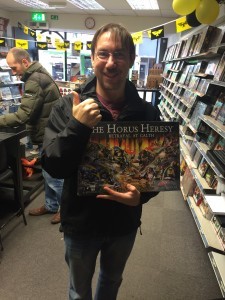 And it was board games that lured me in, much like the generation of fans that got swayed to the Grimdark side by Heroquest and Space Crusade. It started with Betrayal at Calth. Having been involved with the Black Library side of things – the ‘Mark of Calth’ narrative – with my audio Honour to the Dead I was aware of the game and what was being planned, but it was actually not until a couple of months after release that I picked it up. I had been in GW Derby, and left with a few paints, but the thought of it nagged at me and, after a bit of shopping, I went back and bought it.
And it was board games that lured me in, much like the generation of fans that got swayed to the Grimdark side by Heroquest and Space Crusade. It started with Betrayal at Calth. Having been involved with the Black Library side of things – the ‘Mark of Calth’ narrative – with my audio Honour to the Dead I was aware of the game and what was being planned, but it was actually not until a couple of months after release that I picked it up. I had been in GW Derby, and left with a few paints, but the thought of it nagged at me and, after a bit of shopping, I went back and bought it.
Slippery Slope
Gorechosen was next, when I was in the Scarborough store for a signing. And now I couldn’t go to a meeting with a Black Library editor in Bugman’s without first passing through Warhammer World… Each trip wore away my reservations a little more. Warhammer Quest: Silver Tower followed after a demo game during another signing at Derby, and my fate was almost sealed.
My two current magazine subscriptions
My reintroduction began in earnest with the relaunch of White Dwarf magazine. The chat around the magazine sounded promising and knowing some of the people involved I showed a little faith and opted for a 12 months pre-order subscription. I haven’t been disappointed. Each month my attachment to the hobby and gaming side of Warhammer and Warhammer 40,000 has grown again. Credit also to the wider community, on social media in particular, who continue to create and share an constant stream of so much inspirational stuff.And the models… Oh my. I saw advanced pictures of the new Sylvaneth range for Age of Sigmar when I wrote Wrathspring and I knew that things were really stepping up a gear in terms of design. With the introduction of Adeptus Mechanicus and the return to Genestealer Cults I was bitten by the nostalgia bug like so many others.
And then it was the fault of Dave, a new gaming friendship made when I did an interview for Four Dads of the Apocalypse website. My Betrayal at Calth models actually got a couple of run-outs. Then it was a game of the Horus Heresy strike force rules. And that segued into me picking up a copy of the Shadow War: Armageddon book and the Harlequins plastics…
Taking the Plunge
So here I am on 40K release day, and the postie hasn’t arrived with my parcel, so I’m filling my time writing this blog. I ummed and aahed about just getting the rulebook, but I figure if I’m going to do this, I might as well do it properly, Primaris Marines and all.
And in that spirit, I’m going to paint them as a homebrew Chapter. I don’t know who, or what, or anything yet, and that’s really the point. I’m still not an off-the-shelf kinda gamer and the new 40K seems set to be more accessible and mutable than any edition since Rogue Trader. Perhaps I can recapture some of that excitement that first attracted me thirty years ago.
I’ll be taking a look at the exciting background developments in the near future.
So have you taken the plunge with the new edition?
**To make sure you don’t miss out on any blog posts, you can keep up-to-date with everything Gav by signing up to my monthly newsletter. As a bonus, every other month I randomly pick a newsletter subscriber to receive a free signed copy of one of my books.**
Please Feel Free to Share:







June 15, 2017
June 2017 – Q&A (Part 1)
 This is a compilation of questions that have been emailed and messaged to me recently. You may remember that I didn’t do a May Q&A as instead I published one specifically for the Eldar. As there are now lots of questions to catch up on, the June Q&A will come in two parts (and apologies to those who are still waiting for me to respond).
This is a compilation of questions that have been emailed and messaged to me recently. You may remember that I didn’t do a May Q&A as instead I published one specifically for the Eldar. As there are now lots of questions to catch up on, the June Q&A will come in two parts (and apologies to those who are still waiting for me to respond).
If you want to ask anything, you can post a comment here or get in touch through the contact page (and newsletter subscribers can just reply to any of my emails).
I’ve been posting Q&As for a while now, so if you’ve found this one interesting, you can look back at previous Q&As here.
Dmitry emailed via the website: I’m quite curious about one specific issue concerning Black Library’s periodic open submissions – do they consider candidates from foreign countries, i.e. non-residents of the UK and EU’s states while conducting submission windows for short stories?
As far as I am aware there are no issues with a writer’s nationality or country of working when it comes to the submissions window or working for BL. As a freelancer you are not looking for residency in the UK, which is where most work permit and visa issues arise. I’m not sure, but there may be tax forms you have to fill in to confirm you are non-resident (like the W8 from the USA) but being a UK citizen I wouldn’t know!
Best thing to do is write something awesome, submit it, and then worry about the details later
June 3, 2017
ChillCon 2017 – Event Report
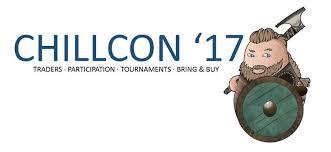 I may have dropped a hint or two (translation: spammed social media) that I was at the ChillCon event in Sheffield on Saturday. My main reason for going was to introduce some nice folks to the joys of Big Stompy Robots but as it turned out the event presented even more opportunities than I was expecting.
I may have dropped a hint or two (translation: spammed social media) that I was at the ChillCon event in Sheffield on Saturday. My main reason for going was to introduce some nice folks to the joys of Big Stompy Robots but as it turned out the event presented even more opportunities than I was expecting.
It’s always difficult getting a new wargames event up and running. Organisers are caught in the catch-22 of trying to attract trade stands and demo games, who want to know there will be a good turnout, and getting people through the door by offering a tempting selection of traders and demo games…
That there were two halls of attractions spoke testament to the efforts of the team in promoting their new venture – one that was timely and geographic after Triples disappeared from the wargaming calendar. It was good to see companies putting their faith and effort into making the opening event a success, and seeing the traders list included the likes of Warlord, Oathsworn Miniatures, KR Multicase, Pig Iron Productions, and many others beside was surely a lure for many of those that attended.
Had they known that they would be sharing the weekend with Warhammer Fest before the release of a new edition of Warhammer 40,000 they might have moved the date (although next weekend is UK Games Expo, and the season really starts getting quite busy after that). Even so and despite a brief deluge, they did manage to get a good number of visitors through the doors.
I ran three games of Big Stompy Robots over the course of the day, and had a great time doing it. Everyone that played had fun, and there was some useful discussions about the game and where I might take it both game-wise and commercially.
Everything ready to go at the start of the day.
As I mentioned in my earlier developer diary there’s no substitute for hitting the table and rolling some dice to generate ideas and highlight areas for future exploitation. In particular, I’d like to thank the teenage player who, after I created some ad-hoc ammo drop rules, was quick to ask, “Can I flamethrower his ammo crates?”. That’s the sort of input that shows what the gamers really want. And the answer is now, “Yes you can”.Free Robots!
One particularly nice thing that happened came in the week before the show. Two of my mechs for the demo game are Wardroids from Pig Iron Productions. The lovely people at that company contacted me and asked if I would like some free wardroids to give away at the show. I naturally said yes!
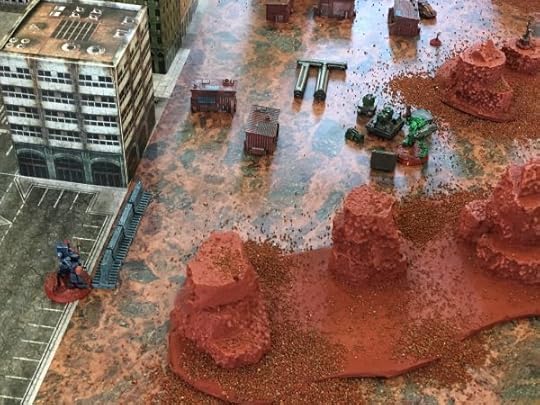
A wardroid from Pig Iron Productions takes on a Razorback Heavy Gear from Dream Pod 9
So thanks to Alex and Helen for their generosity, I am sure the proud new owners of these mechanical men are very happy.
As if that wasn’t enough, Johnathan Straw of Britannicus Games also gave me a couple of freebies… As sole UK distributor of the Mecha Front ranges (which Kickstarted last year) Johnathan has been keeping an eye on Big Stompy Robots. He was at ChillCon running a very nice looking game of Horizon Wars, created by Robey Jenkins and published by Osprey. I have had my eye on the Mecha Front range since I started Big Stompy Robots so it was nice to see some in the flesh (well metal, although production has now moved to resin). I will certainly be picking up a couple of others. I also need to thank him for the loan of the tape measure, when I realised I had forgotten to pack mine. I really need to come up with a demo game checklist to make sure that sort of thing doesn’t happen again.
 Speaking of tape measures and free stuff, Richard of Shiny Games, based in Nottingham, not far from where I live, was kind enough to let me keep his after playing in my opening demo game. I really like the Shiny Games philosophy and its cool to see some lesser known games from around the world with a UK retailer. We also chatted a bit about the Nottingham gaming scene (and how everything seems to happen on Wednesdays) and possible future Big Stompy Robots testing sessions.
Speaking of tape measures and free stuff, Richard of Shiny Games, based in Nottingham, not far from where I live, was kind enough to let me keep his after playing in my opening demo game. I really like the Shiny Games philosophy and its cool to see some lesser known games from around the world with a UK retailer. We also chatted a bit about the Nottingham gaming scene (and how everything seems to happen on Wednesdays) and possible future Big Stompy Robots testing sessions.
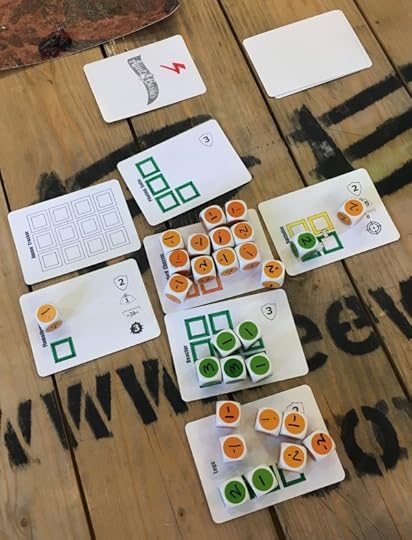
WARNING! WARNING! SEVERE DAMAGE! INITIATING AUTO-SURVIVAL MECHANISM!
Video Killed the Games Design Star
You may have seen in the previous week that I conducted a live questions and answers session hosted by the WargamerOnline team. I’ve watched this up-and-coming venture with interest and they have arrived strong, with three thousand subscribers after only twelve weeks since their hard launch – though as I learnt chatting to them on the weekend, that was after nearly a year of practising and honing. Phil kindly offered to knock together a games table if I like – which is gratefully appreciated and I will take up at some point – and I reciprocated with a proposal to take my BSR demo down to their studios so they can have a play.
And because it’s always a little bit about who you know as well as what you know in these circumstances, I’d like to thank them also for introducing me to Word Forge Games. You may know them from The Devil’s Run: Route 666, but they also act as a design studio resource for other creators. I can see they have an eye for quality production, which I think is paramount, so maybe somewhere down the line there might be some fruitful discussions to be had if I want to take Big Stompy Robots to market.
A quick note to the WargamerOnline guys – you didn’t bring those books you wanted signing… Next time, maybe.
More Thanks
My gratitude to Benjamin Fox of Fox Box, who took the time to come over and say thank you for Digganob! Gorkamorka set him on the road to miniatures production and I’m happy to have played a small part in that. It’s sometimes easy to forget that just as I was inspired to get into gaming and games design by the likes of Donald Featherstone, Rick Priestley and Jervis Johnson (and many others) there are those that might one day be inspired to work in the industry by what we are currently producing. Every creator and hobbyist is a potential ambassador to future generations.

Three new BSR pilots survey the destruction
And last, but not least, thanks to the people that turned up to play. I really enjoyed introducing you to my latest game and your enthusiasm for it is an encouragement to continue.
**To make sure you don’t miss out on any blog posts, you can keep up-to-date with everything Gav by signing up to my monthly newsletter. As a bonus, every other month I randomly pick a newsletter subscriber to receive a free signed copy of one of my books.**
Please Feel Free to Share:








